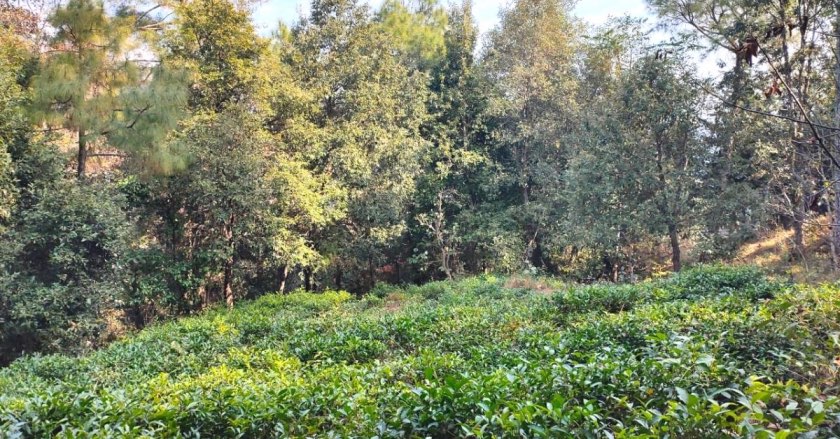As a child, Jagdish Kudiyal from Sirkot village of Dehradun always saw a spring flowing along with his ancestral fields and tea gardens. Surrounded by dense greenery, the spring, locally called gadera, served as a water source for the villagers.
However, growing up over the years in Kumaon valley, the 55-year-old also witnessed the environment deteriorating around him. There was rampant tree felling in the area which drastically reduced the green cover. This further impacted the groundwater table and the natural spring flowing through the year.
In the early 1990s, Jagdish became inspired by the Chipko movement. He decided to help repair the damage himself caused to the environment by planting saplings. Jagdish took the responsibility upon himself and started the initiative.
However, his individual efforts did not live up to his expectations, as the saplings fell victim to cattle grazing, animal stomping and youngsters destroying it for fun.
However, the relentless work of a single man persisting for 30 long years revived a spring. It became a reliable drinking water source to 400 families in the village. His success saw praise by the governor and even earned him a ‘kudos’ in PM Narendra Modi’s Mann Ki Baat.
To Plant Hundreds of Trees

Jagdish tells The Better India, “The spring began drying up in the 1990s, and I could see it shrinking over the years. I learned that planting trees would help rejuvenate it as the roots have water holding capacity and become a source of water pockets to last through the year.”
The farmer and grocery store owner says that he planted hundreds of trees until 2000, and hardly some survived due to the damages. “The spring was reduced to a small water line by then, and a different approach was needed. Hence, I started growing tea plantations around the spring area,” he adds.
He also hired labourers to take care of the tea garden. “This served two purposes. One was to maintain the garden and the other to protect the trees from damage. The approach worked. Slowly, the trees grew. I continued planting saplings of native species in and around the area,” he says.
Jagdish observed the first signs of the revival of the spring in 2012. The size of the water channel widened, and the water flow increased as well. “It encouraged me and the locals started accessing small amounts of water from it. I also planted trees in other parts of the village to help increase the groundwater table,” he says.
Gopal Dutt Shakeel, a resident from the village, says, “The villagers consume the spring water and use it for irrigation. The massive tree plantation drive helped recharge the groundwater. The other villages have also appreciated his efforts.”

Jagdish says that he must have planted at least 15,000 trees in the past 30 years. “I plant hundreds of trees every monsoon. Last year, about 2000 trees dried up as there was less rainfall. But I continue my efforts,” he adds.
When asked about what kept him, Jagdish replies, “I believe in good karma. I help widows with their livelihood, pay school fees for children who can’t afford it, among other social work. I never received any help from the government or anyone else for my work. It was my wish to contribute to the betterment of the environment.”
About receiving appreciation from PM Modi, Jagdish says it was unexpected. “I will not deny that I was happy. A Doordarshan reporter covered my work, and that must have reached the PM. The praise gave me satisfaction for the work done,” he adds.
Jagdish has become a local celebrity, so much so that the neighbouring villages have also approached him, seeking help rejuvenating natural springs around them.
Edited by Yoshita Rao
No comments:
Post a Comment